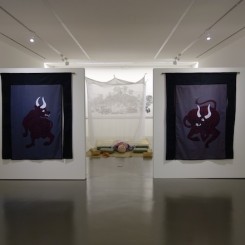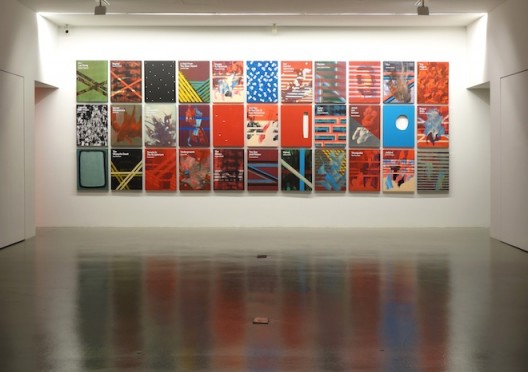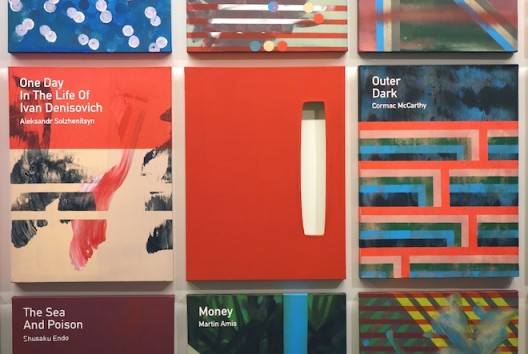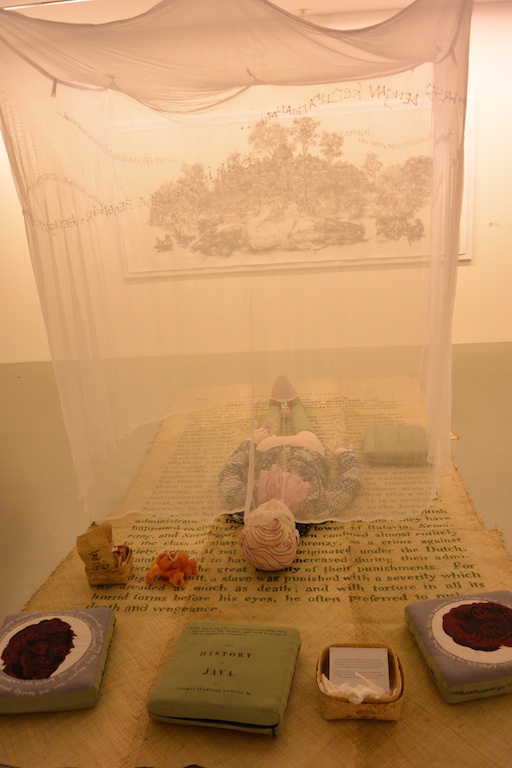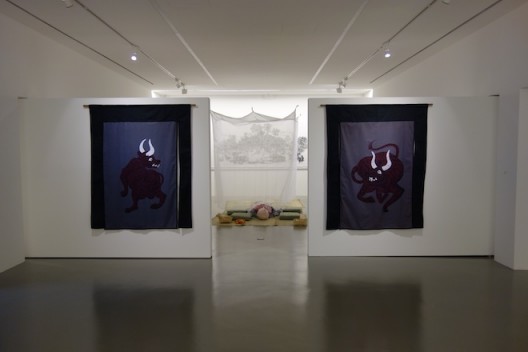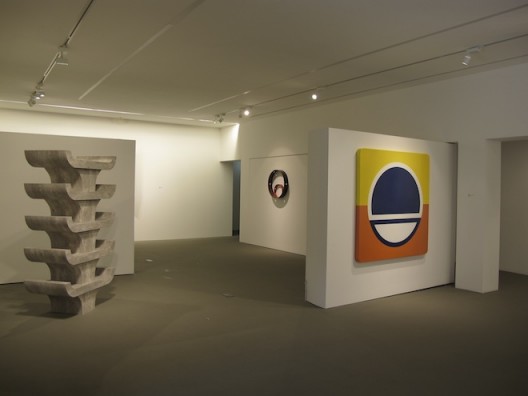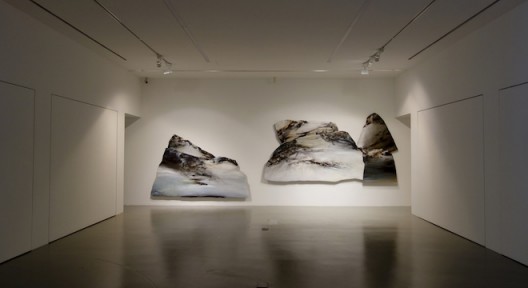Randian is in Singapore for the 6th edition of Art Stage, the fair which positions itself as the gateway to the emerging South East Asian art market. That covers a helluva lot of territory—much more than Europe—and sometimes the local Singaporean art scene can be overlooked, not least because the major galleries in Singapore tend to be foreign. FOST Gallery is an exception.
Donna Ong “My Forest Has No Name”
FOST Gallery (1 Lock Road, #01-02, Gillman Barracks) Jan 16 – Feb 28, 2016
Singapore is far from being a mature international market, despite considerable Governmental resources being devoted in recent years to building art institutions, from the National Art Gallery to the Centre for Contemporary Art. It takes time. After all, Singapore is still well ahead of Malaysia and the Philippines, and in an altogether different galaxy to Thailand, Vietnam and Cambodia. What it has achieved thus far, particularly over the past ten years, is impressive.
Yet the strictures of the local scene remain complex and not easily navigable. There is a paucity of sophisticated or adventurous collectors, or even dedicated parochial ones. The island state is often compared with Switzerland, and it is certainly similarly expensive. Space restrictions inevitably impose modesty upon collections. State-of-the art storage is fine and good but the pleasures of a storage manifest are limited and frankly, peculiar, albeit seemingly popular given the health of the art storage business. Meanwhile, although international collectors may visit, including from Indonesia, China and the Philippines, often they can buy the same or better works for less money elsewhere, not least of all at home.
Complex, for sure but far from hopeless. Often the most interesting developments in Singapore’s art scene are evolutionary rather than strategic. It has a great education system, and while traditional families might blanche at their children expressing a desire to become artists rather than doctors and lawyers, Singaporean art students are very well trained (if a little academic, nerdy if you will). Often students go on to study at leading schools overseas, and quite often end up living there, such as Ming Wong and Ang Song Ming live in Berlin. But the art world is build on connections, so this creates opportunities.
Gallerist Stephanie Fong, a Singaporean, born and bred, manages to balance the foibles of the local market with a pragmatic exhibition program. Some exhibitions are aimed at turnover, while others are more experimental, whether focusing on local history (Jimmy Ong) or minimalism and sound (Ang Song Ming). In Singapore, this alone is a considerable achievement. More intriguing is how she succeeds. Unlike many local galleries, Stephanie realized that there was a large and largely ignored pool of local talent, and one which—largely unbeknownst to Singapore (with notable exceptions like STPI)—was gaining traction in the international art world. Singapore has an international art network already in place: its artists.
This month FOST is exhibiting Donna Ong (Randian will review the show). Last year Donna was awarded a prestigious residency at Kunstlerheim Bethanien in Berlin. She is also represented by influential Austrian gallery, Krinzinger. Another artist, Ang Song Ming recently participated in the Istanbul Biennial, curated by Carolyn Christov Bakargiev. Heman Chong has participated in major shows at Witte de With. And so it goes on.
They are small steps but the health of any art market is judged not by auctions and megastar exhibitions but the galleries that occupy the mid-size category, because they provide the base for everything else in a “living” art market, where artists need an income and collectors come in all shapes and sizes. In Singapore this territory is more modest than in London, Zurich or LA but it performs the same role: developing the market for emerging artists and developing the local and visiting collector base (eventually the path leads up to bigger galleries, international exhibitions and the institutional level). This year at Art Stage Singapore visitors will note a greater emphasis among exhibitors than ever before on Singaporean artists. Primo Marella gallery from Milan is showing only Singaporean artists. ShanghART is also showing numerous Singaporean artists. Motivations are no doubt partly economic but in art fairs they always are (always). But FOST was here first and its influence is quietly growing.

